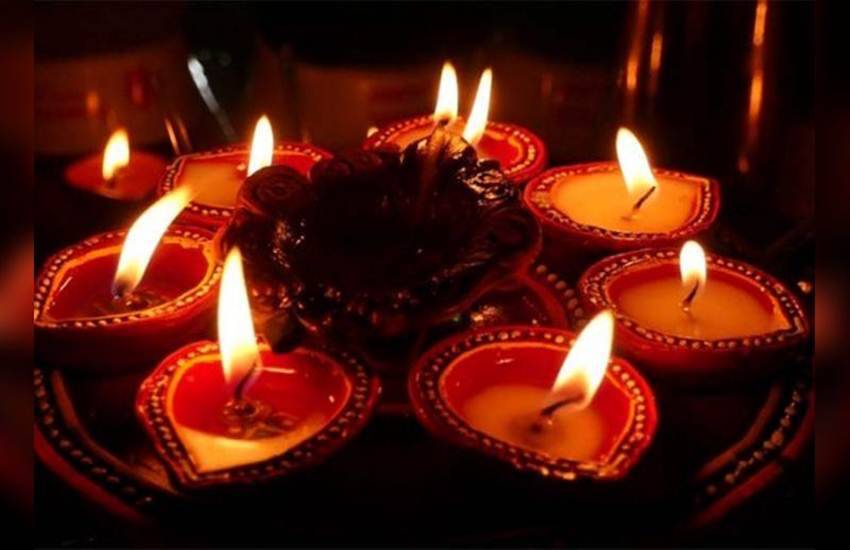In the wake of Dīpāvali, the act of Puja is a phenomena that is likely be fresh in the minds of many, devotee or spiritual seeker alike. As custom, on the night of Dīpāvali, individuals around the world will light ghee wick laps as an offering to Lord Sri Rāma (the incarnation of God), in celebration of his return to His kingdom of Ayodhya as the rightful king.

One of the most effective means of devotional meditation is known as Puja. This post is intended as an introductory guide for anyone interested in performing their own Puja at home.
Puja involves the direct meditative worship of God through the making of various symbolic offerings to God with devotion. Usually conducted before a temple altar, or at home with your own personal altar, the performance of Puja is an important devotional activity that can and ideally should be conducted as part of ones daily Sādhanā.
The ultimate goal of Sanatana Dharma (the Eternal Natural Way) is to re-establish our innate relationship with God. Through the re-establishment of our connection to God, a devotee is able to overcome trauma, rid themselves of the bonds of material attachment, and otherwise grow spiritually as an individual. We do this by cultivating a devotional consciousness towards the Supreme.
Puja is not merely a ritual or ceremony however. It is not “ritualism”. It is an active act of meditation, in which a dharmi is systematically transforming their consciousness into a mode of natural surrender of the individual self to the Supreme Self that is God. Through the process of Puja meditation, a devotee offers various pure substances to the murti, or divine image, of God. With each item that a dharmi offers, they are meditating on the fact that they are, in actuality, offering their inner being at the lotus-feet of the Divine.
The performance of Puja can be a profound and humbling experience, and is thus a recommended and beneficial practice to take up at home as part of ones practice.
In order to perform a Puja ceremony at home, ideally one should have an established home altar. This altar can be as simple as a small table or shelf, or as elaborate as putting aside an entire room or a section of a room just for the purpose of performing sadhana. The size and scope of ones altar is secondary to the quality of the practice itself. The most important thing to keep in mind is that, more important than how large your altar might be, is how much awareness and sincerity you bring to your puja practice.
As stated in the Bhagavad Gita (9:26), Sri Krishna Him self explains:
“If one offers Me with love and devotion a leaf, a flower, fruit or water, I will accept it.” The quality of devotion with which we offer anything to God is much more important than the quantitative value of what we offer.

There are several items that a dharmi should ideally have if they are to perform puja. At a minimum, one should have access to incense and an incense holder, a means of lighting them, such as a lighter or matches, a hand bell to ring, and a ghee-wick lamp (which subsequently require wicks and ghee to utilize fully.) The uses for these will be layed out shortly.
You must be bathed and clean before performing puja. This is very important.
As one of the Niyamas, or prescriptions, to which a dharmi should strive to adhere to, Shaucha, or purity, applies to physical cleanliness as much as it does to purity of mind.
Purity consists of both scrupulous external hygiene, and internal cleanliness of mind. The former is achieved by bathing, brushing one’s teeth etc, every day without fail. The latter is accomplished by allowing only good, pure, positive and spiritual thoughts to flourish in our minds, and by conversely not allowing the opposite (evil, impure, negative and materialistic thoughts) to dominate our minds.
As a result of this, when we perform Puja, a dharmi must strive to ensure he is clean of body and mind before commencing.
To start the act of Puja, a dharmi should situate themselves before their altar. First, one should center themselves. This is best done by closing your eyes and taking a few normal breaths with awareness, allowing yourself to be at peace and open to God’s grace.
Next, opening your eyes, place your hands together in ‘namaste’ gesture and offer your obeisances to the murti, reciting “Jaya Sriman Narayana” (Victory to Sri Sri Lakshmi and Narayana).
Light a stick of incense. Now begin ringing the bell rhythmically with your left hand. Gently wave the incense stick in your right hand in a clockwise circular motion – three times to the face of the image, three times to the belly, three times to the feet, and finally four times around the entire image. Then place the incense stick in a safe holder. The offered incense is now prasada, or the sanctified grace of God. Smelling its aroma is spiritually beneficial because its scent was first accepted by God.
Next, light the ghee wick lamp. Offer the ghee wick lamp with your right hand, ringing the bell in your left hand in the same manner and with the same numbers as the incense was previously offered (three times to the face, belly and feet, then four times around the entire image). When you are done, quickly pass your hands over the flame of the ghee wick lamp and place your hands to your forehead for a blessing. The flame of the ghee-wick, too, is now sanctified prasada. Thus, seeing the flame and smelling its aroma will be spiritually beneficial.
You may then offer other items in a similar manner to how you offered the incense and ghee-wick lamp. Other items that you can offer include: a flower, water, or some simple food such as almonds or raisins (which are afterwards eaten as a sacrament, or “prasada”).
After the puja is over, you may again place your hands in the ‘namaste’ gesture and offer your obeisances to the altar. Offering obeisances is performed by placing your forehead to the ground while having the top of your head facing the deity. Please then recite the following mantras.
aum ajnana timirandhasya
jnananjana shalakaya
chakshur unmilitam yena
tasmai sri guruve namaha
“I offer my respectful obeisances to my spiritual teacher, who has opened my eyes, which were blinded by the darkness of ignorance, with the torchlight of knowledge.”
he krishna karuna sindho
dina bandho jagat pate
gopesha gopika kanta
radha kanta namo’stu te
“Oh Krishna, ocean of mercy, You are the friend of the distressed and the source of creation. You are the master of the cowherdmen and the lover of the gopis, especially Radha. I offer my respectful obeisances unto You.”
tapta kanchana gaurangi
radhe vrindavaneshvari
vrishabhanu sute devi
pranamami hari priye
“I offer my respects to Radha, whose bodily complexion is fair and who is the Queen of Vrindavana. You are the daughter of King Vrishabhanu, and are very dear to Lord Krishna.”
Sriman Narayana Charanau Sharanam Prapadye
Srimate Narayanaaya Namah
“I seek refuge at the feet of Sriman Narayana. My salutations to Sriman Narayana.”
Having completed the puja, this would now be an ideal time to now perform your daily meditation practice in front of your altar, smelling the sweet aroma of the incense and ghee-wick.
Linked below is a video by Sri Dharma Pravartaka Acharya performing a puja before the Lakshmi-Narayana murtis at the ISDS temple in Nebraska.

